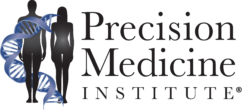A relatively new procedure called histotripsy uses microscopic sound waves to destroy cancer cells. With clinical trials offered in six states, the alternative therapy for cancer could strengthen immunotherapy for patients with low response
Precision medicine science may benefit from using a tool that has traditionally only been used for diagnostics. Recent advances in ultrasound technology are enabling it to augment cancer treatments in certain patients and personalize immunotherapy.
Years ago, scientists made the conceptual leap that ultrasound-induced microscopic bubbles could have a damaging effect in highly localized areas of the body where ultrasound is used. Referred to as acoustic cavitation and, today, through a modern procedure called histotripsy, both acoustic cavitation and histotripsy are not well understood for their potential in healthcare treatment and procedures.
CMS Recognizes Histotripsy as an Alternative Therapy
Histotripsy has a short history in research and development. However, the Centers for Medicare and Medicaid Services (CMS) recognized the procedure in September 2021, during ICD-10 coordination and maintenance, as an alternative therapy to treat liver tissue noninvasively. In the document, CMS included three key elements that differentiate histotripsy from other procedures:
- High-amplitude, short-pulses (microsecond) of focused ultrasound is directed at the soft tissue target to destroy tissue at the sub-cellular level.
- Negative pressure created by this process creates a cavitation “bubble cloud,” which is the rapid expansion and collapse of gas microbubbles, in the targeted tissue.
- The resulting strain on the tissue produced by the bubble cloud causes a mechanical disruption of the cells.
Histotripsy Explored for Its Benefits in Liver Cancer

Recent research published in Cancers shows histotripsy could dramatically change traditional approaches to cancer tumor eradication. In this example, a study at the University of Michigan used histotripsy to break up and destroy liver cancer in rats. The researchers sought to prove how much cancer volume could be reduced in specific areas. The related article, titled, “Impact of Histotripsy on Development of Intrahepatic Metastases in a Rodent Liver Tumor Model,” explained that about 50% to 75% of the cancer’s volume reduced as a result of the acoustic cavitation. Thus, the tumors were reduced to a small enough size that the body’s immune system might naturally destroy the remaining tumor, according to the researchers.
“Even if we don’t target the entire tumor, we can still cause the tumor to regress and also reduce the risk of future metastasis,” said Zhen Xu, PhD, in a University of Michigan statement from May. Xu is the senior author of the study, a professor of biomedical engineering at the University of Michigan, and the founder of a company based on the technology.
Clinical trials using histotripsy are currently recruiting in six states, including Michigan, as well as Florida, Illinois, Kansas, Minnesota, and Wisconsin.
How Histotripsy Is Different from Traditional Ultrasound
“Histotripsy has been investigated for a wide range of applications in preclinical studies, including the treatment of cancer, neurological diseases, and cardiovascular diseases,” Xu wrote in 2021 in a comprehensive overview of the origin of histotripsy, its mechanism, bioeffects, parameters, instruments, and earlier results on preclinical and human studies that were undertaken using histotripsy for the treatment of benign prostatic hyperplasia, liver cancer, and calcified valve stenosis.
The type of ultrasound used for histotripsy is very different from the ultrasound used for imaging during pregnancy or to image certain disease. Past opinions have likened histotripsy to shockwave therapy. “Our transducer, designed and built at U-M, delivers high amplitude microsecond-length ultrasound pulses—acoustic cavitation—to focus on the tumor specifically to break it up,” Xu said as part of the U-M announcement earlier this year. “Traditional ultrasound devices use lower amplitude pulses for imaging.” The high-amplitude ultrasound pulses are what gives this new technology its effectiveness, according to the researchers.
One of the key benefits to histotripsy is how safe a treatment option it appears to be compared to other potential treatments. Histotripsy is noninvasive which means it can be performed externally without any surgical interventions. It also does not require radiation or create heat as a byproduct, avoiding many potential complications caused by other forms of cancer treatments.
UVA Health Establishes Center for Focused Ultrasound Cancer Immunotherapy
Seeing histotripsy as a way to augment immunotherapy cancer treatments, the University of Virginia (UVA) health system established the Focused Ultrasound Cancer Immunotherapy Center in May. Scientists believe histotripsy can be used to improve immunotherapy by making tumors more receptive to immunotherapy in subsegments of patients who do not respond well to immunotherapy treatment. Immunotherapy is a more recent advance in oncology that uses patients’ own immune systems to target and destroy cancers. Notably, this form of treatment is only effective in 20% to 40% of patients.
“Focused ultrasound is proving to enhance the effectiveness of cancer immunotherapy throughout the cancer immunity cycle in a variety of ways,” explained Neal F. Kassell, MD, in a UVA news release. Kassell is founder and chairman of the Focused Ultrasound Foundation, which praised the publication of Category 3 CPT codes, specifically 0686T that allows data collection for emerging technologies, services, procedures, and service paradigms.
“[Focused ultrasound] can stimulate the body’s immune response to convert immunologically ‘cold’ tumors—such as most breast cancers—into ‘hot’ tumors, making more patients responders,” Kassell continued. “It can also enhance the delivery of immunotherapeutics to tumors, and it may also augment the effectiveness of immunotherapeutics, enabling more robust and prolonged response to drugs and decreasing the doses needed.”
Healthcare leaders will want to follow this nascent field of sound wave therapy as more research and the findings of clinical trials emerge. Those who consider the implications of focused ultrasound now will be best positioned to lead the way in bringing its benefits to patients.
“Histotripsy is a promising option that can overcome the limitations of currently available ablation modalities and provide safe and effective noninvasive liver tumor ablation,” said Tejaswi Worlikar, MS, a doctoral student in biomedical engineering at University of Michigan. “We hope that our learnings from this study will motivate future preclinical and clinical histotripsy investigations toward the ultimate goal of clinical adoption of histotripsy treatment for liver cancer patients.”
—Liz Carey, Caleb Williams
Related Information:
Impact of Histotripsy on Development of Intrahepatic Metastases in a Rodent Liver Tumor Model
Ultrasound Technology Helps Destroy Liver Tumors in Rats
Development and Translation of Histotripsy: Current Status and Future Directions
Histotripsy: The First Noninvasive, Non-Ionizing, Non-Thermal Ablation Technique Based on Ultrasound
Focused Ultrasound Cancer Immunotherapy Center
World’s 1st Focused Ultrasound Cancer Immunotherapy Center Launched
